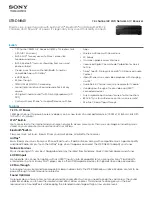
7
7
7
WARNING: Handling of ESD Sensitive Devices
Electrostatic discharge is a sudden flow of current from one object to another either object or to
ground. Electrostatic charges can accumulate on common items such as polystyrene drinking cups,
cellophane tape, synthetic clothing, untreated foam packaging material, and untreated plastic bags
and work folders, to name but a few.
Electronic components and assemblies, such as Septentrio OEM receivers, can be permanently
damaged or destroyed when near or in contact with electro-statically charged objects. When you
handle components or assemblies that are not in protective bags and you are not sure whether
they are static-sensitive, assume that they are static-sensitive and handle them accordingly.
Everyone who is working with ESD-sensitive devices must be aware of these rules.
General rules
Always test your ground strap, bench mat, conductive work surface, and ground cord before either
removing components and assemblies from their protective bags or before beginning any
disassembly or assembly procedures. Perform all service procedures in a static-protected
environment. Always use techniques and equipment designed to protect personnel and
equipment from electrostatic discharge.
Handling
•
Remove static-sensitive components and assemblies from their static-shielding bags only at
static-safe workstations - a properly grounded table and grounded floor mat - and only when
you are wearing a grounded wrist strap (with a resistor of at least 1 mega-ohm in series) or
other grounding device. Avoid having non-ESD safe material on the workbench. Clear the
work station of static ge
nerators like e.g. polyethylene, vinyl’s, foam, notebooks, document
holders, etc.
•
Use only grounded tools when manipulating static-sensitive components and assemblies.
•
Place and seal static-sensitive components and assemblies in their original static-shielding
bags before removal from static-protected areas.
•
Stacking of board assemblies should be avoided to prevent physical damage to devices.
Transport & Storage
•
Limit as much as possible the manipulation of ESD-sensitive devices and components.
•
Handle ESD-sensitive parts as far as possible in their (original) protective packaging.
•
Protect ESD-sensitive components against dust as this is a possible carrier of static loads.
Assembled printed circuit boards (PCB’s) must always be placed in an anti
-static shielding
bag, box or PCB containers during transport between workplaces or to a warehouse.








































